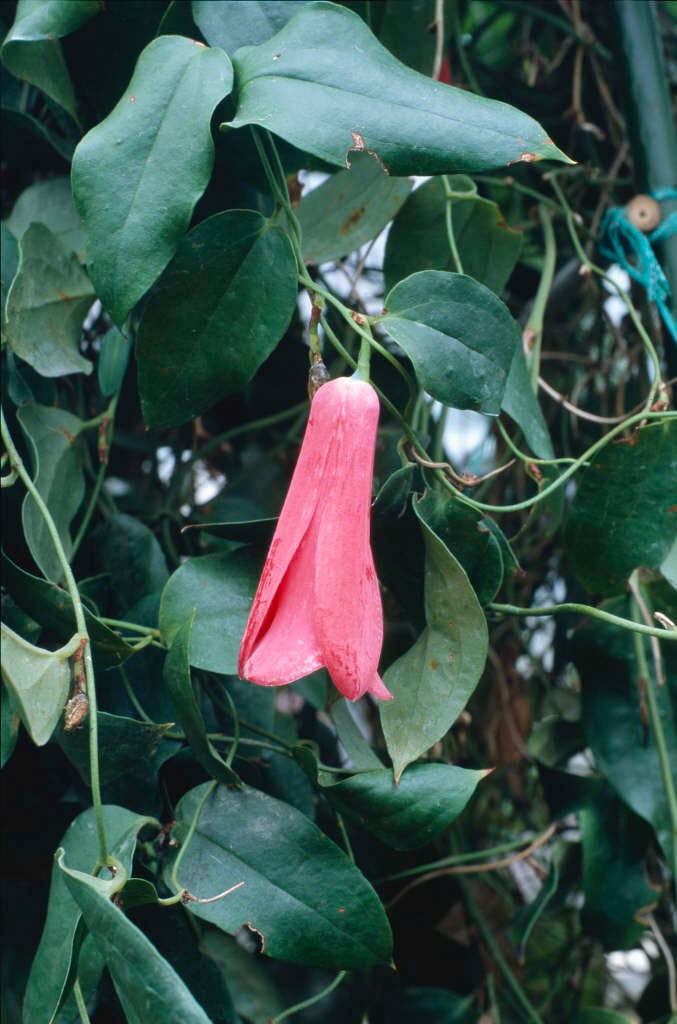Not the plant you're looking for? Search over 300,000 plants
Climber Wall ShrubConservatory GreenhouseHouseplants
Size
Ultimate height
2.5–4 metresTime to ultimate height
5–10 yearsUltimate spread
1.5–2.5 metresGrowing conditions
Clay
Loam
Sand
Moisture
Moist but well–drainedpH
Acid, NeutralColour & scent
| Stem | Flower | Foliage | Fruit | |
| Spring | Green | |||
|---|---|---|---|---|
| Summer | Pink Red | Green | ||
| Autumn | Pink Red | Green | ||
| Winter | Green |
Position
- Full shade
- Partial shade
Aspect
North–facing or West–facing or East–facing
Exposure
Sheltered Hardiness
H3Botanical details
- Family
- Philesiaceae
- Native to GB / Ireland
- No
- Foliage
- Evergreen
- Habit
- Climbing
- Genus
Lapageria is a twining climber, with ovate, evergreen leaves and large, pendent, waxy-textured, narrowly bell-shaped flowers in summer and autumn
- Name status
Correct
- Plant range
- Chile, Argentina
How to grow
Cultivation
Ideal climber for a mild, shady garden, especially in acid to neutral soil. Protect from cold drying winds and provide support. It can also be grown indoors in a large container
Propagation
Propagate by seed or layering
Suggested planting locations and garden types
- Wall side borders
Pruning
Pruning group 11 after flowering or leave unpruned
Pests
May be susceptible to aphids, mealybugs, scale insects and tortrix moth
Diseases
Generally disease-free
Get involved
The Royal Horticultural Society is the UK’s leading gardening charity. We aim to enrich everyone’s life through plants, and make the UK a greener and more beautiful place.
